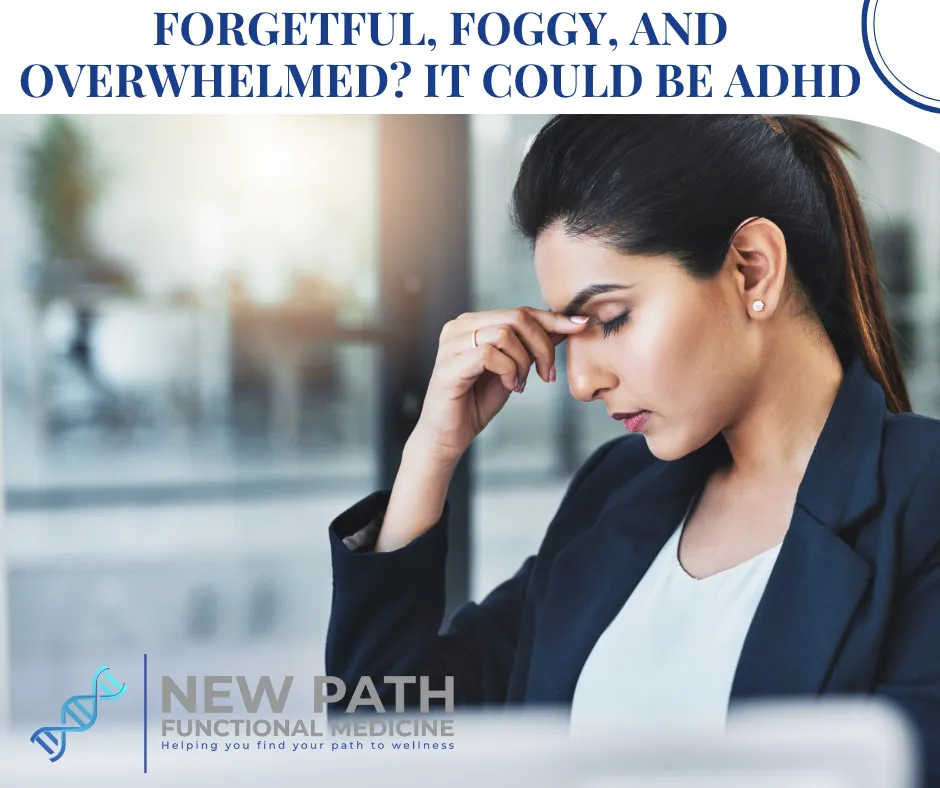
Brain Fog, Poor Memory, Constant Distraction? You Might Have Adult ADHD
Do you find yourself drifting through your day, mentally fuzzy, missing appointments, or constantly distracted, even when you should be focused? Maybe your mind feels like it’s wrapped in cotton wool, small tasks feel overwhelming, and despite doing all the “right” self-care, your to-do list only grows longer. It’s easy to chalk it up to stress, anxiety, or burnout. But sometimes, these symptoms trace back to a frequently overlooked condition: adult inattentive-type ADHD.
What Is Inattentive-Type ADHD?
Common Signs You May Be Missing
●Persistent brain fog and memory glitches.Details slip away even after a good night’s sleep.
●Chronic distraction.Not just from external noise, but from a wandering, unfocused mind.
●Procrastination.Starting tasks feels paralyzing—not from fear, but because your brain can’t “switch on.”
●Forgetfulness.Missed appointments, misplaced items, or zoning out mid-conversation are all classic cues.
Why It’s Often Misdiagnosed
What’s Happening Beneath the Surface
A Functional Medicine Approach
1. Functional Testing
●Nutrient testingto check for deficiencies in iron, zinc, magnesium, omega-3 fatty acids, and B vitamins, all critical for neurotransmitter balance.
●Blood sugar and insulin testingto assess glucose regulation. Dysregulated blood sugar can mimic or worsen ADHD symptoms.
●Comprehensive stool or microbiome testingif gut health issues are suspected, since gut inflammation can affect brain chemistry.
●Hormone panelsare used when symptoms overlap with thyroid issues, adrenal dysfunction, or estrogen/progesterone imbalances.
2. Nutrition for Focus and Clarity
●Steady blood sugar = steady focus.A protein-rich breakfast and balanced meals throughout the day can reduce crashes that worsen distraction.
●Omega-3 fatty acids.Found in fatty fish, chia, and flax, these support brain cell membranes and neurotransmission.
●Iron, zinc, and magnesium.Common deficiencies linked with ADHD symptoms; leafy greens, nuts, seeds, and legumes can help.
●Elimination diets (when appropriate).Food sensitivities (like gluten or dairy) may exacerbate brain fog and inflammation in some people.
3. Lifestyle and Brain-Supportive Habits
●Prioritize sleep.Deep, restorative sleep helps reset the prefrontal cortex. Aim for a consistent bedtime and reduce screens before sleep.
●Movement.Regular exercise boosts dopamine and norepinephrine naturally, improving focus and mood. Even short walks between tasks can help.
●Mind-body practices.Mindfulness, yoga, or breathwork can calm the nervous system and reduce the overwhelm that compounds ADHD symptoms.
●Nature breaks.Time outdoors helps restore attention and reduce cognitive fatigue, a concept known as attention restoration theory.
4. Therapeutic Supports
●Cognitive Behavioral Therapy (CBT)tailored for ADHD can help reshape negative thought patterns.
●ADHD coachingprovides accountability and systems for organization.
●Executive function “hacks.”Using timers, visual reminders, or breaking tasks into micro-steps reduces mental load.
5. Medication (When Needed)
References
Sibley, M. H., Kuriyan, A. B., Evans, S. W., Waxmonsky, J. G., & Smith, B. H. (2014). Pharmacological and psychosocial treatments for adolescents with ADHD: An evidence-based review. Journal of Clinical Child & Adolescent Psychology, 43(4), 527–551.
